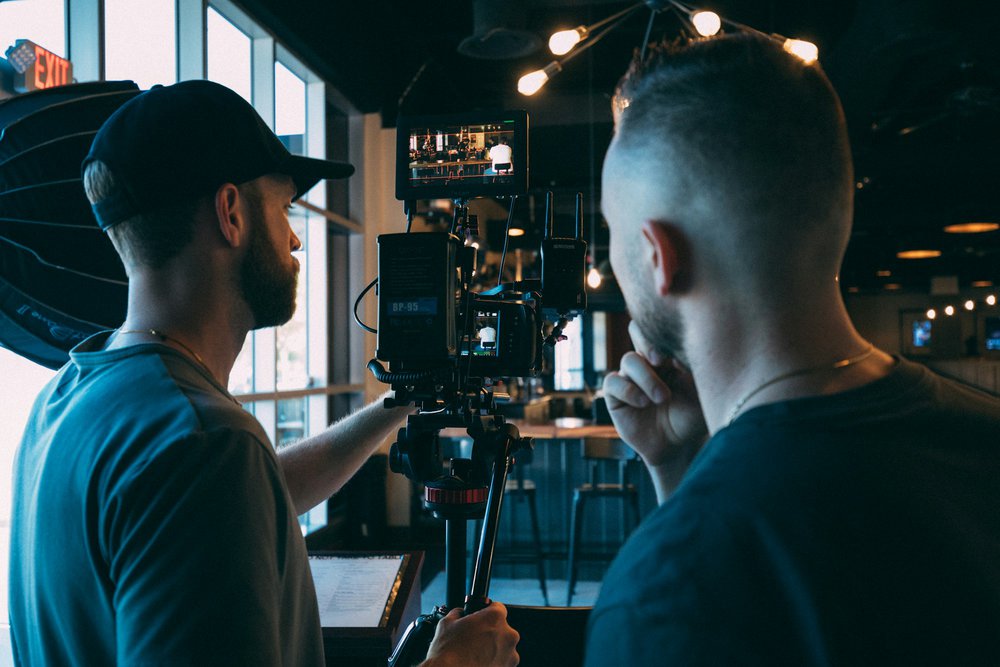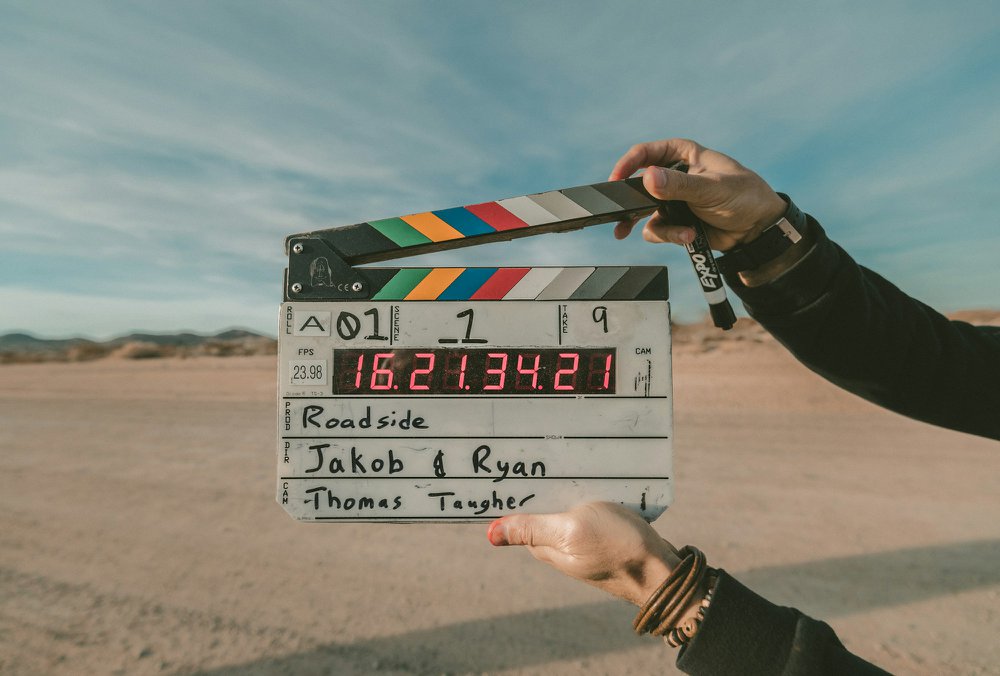Creating video content for your business is one of the smartest ways to connect with your audience. Videos help you explain what you do, build trust, and show what makes your brand different.
But the real impact comes from choosing the right video style.
Your video style shapes how people see your brand and how your message feels. Whether it’s a live action video, an animated explainer, or a short social clip, the right approach makes your story clear and memorable.
In this post, we’ll break down the most effective video styles for businesses and how to choose one that fits your goals.
First, Let's Breakdown “Video Style”

Different production companies have different terms for their services.
At Levitate, when we say “video style”, we're referring to the look of the video (2D animation, Live Action, 3D animation, mixed media, etc.) When we say “video type”, we're referring to the use case of the video (testimonial, social video, commercial, product demo, etc.)
So you could have a video where the style is 3D animation and the type is a product demo.
However, for the purpose of this blog - let's think of style holistically.
The right style for your business means both the look and type align perfectly with your brand, message, and intended purpose.
Importance of Choosing the Right Video Style

Choosing the right video style isn’t just a creative choice, it’s a strategic one. The way your video looks and feels can shape how people connect with your brand and what they remember about it.
- Brand Fit: Your video should look and sound like your brand. The right color palette, tone, and pacing keep everything consistent across campaigns and help your audience recognize you instantly.
- Better Engagement: When your video style feels natural to your audience, they’re more likely to keep watching and take action. Authentic visuals and clear storytelling turn casual viewers into engaged prospects. Wyzowl’s 2025 Video Marketing Statistics report found that 89% of consumers were convinced to buy a product or service after watching a video.
- Stronger ROI: The right approach pays off. A well-chosen video style can be repurposed across multiple platforms, giving you more value from every production. It’s not just about creating one video, it’s about building assets that keep working for your business. 93% of marketers say video has helped them increase brand awareness and 87% report a direct boost in ROI from their campaigns.
The right video style connects when it meets your audience where they already are in the feeds, inboxes, and screens they use every day.
How to Choose the Right Video Style
Choosing the right video style starts with understanding what you want your video to accomplish. It’s not just about visuals or animation, it’s about finding a production approach that fits your brand and drives real results.
Here's how to make that call:
Start With Your Brand
Before you pick a style, take a good look at who you are as a brand.
- Voice & Tone: Is your brand serious and professional, or more casual and conversational? Your video's tone should match.
- Look & Feel: Go for a visual style that fits your brand's personality - clean and minimal, bold and energetic, or sleek and polished.
- Check the Competition: See what kinds of videos your competitors are using. What's working for them? And where is there a gap you can fill to stand out?
Know What Your Video Needs to Do
Every video should have a clear purpose. Before choosing a video style, decide exactly what you want it to achieve. Be clear about what you want your video to achieve. Your goal shapes everything from the script to the final edit.
- Set the Objective
Decide what the video is meant to do. An explainer or how to video helps educate, a short live action video builds awareness, and a testimonial or interview video creates trust. - Keep It Focused
Limit your message to two or three key points. Clarity keeps viewers watching and makes your content more memorable, no matter the style: motion animation, cutout animation, or stop motion animation. - Define Success
Know how you’ll measure results. Track clicks, shares, or sign-ups to see if the video meets your goal and delivers real value.
Know Your Audience (Like, Really Know Them)

The more you understand your audience, the more effective your video will be. Every group responds differently to video content, so your production strategy should reflect who you’re talking to and where they’ll see it.
- Do Some Digging
Focus on who the video is really for. Identify their stage in the buying process and where they’ll watch it. Tailor your message for that space, whether it’s social media, email, or your website. - Tell Stories That Stick
Show that you understand their challenges. Use simple, relatable examples and position your brand as the solution. Keep it clear, authentic, and focused on what matters most to them. - Test, Learn, Repeat
Watch how each version performs. Try different lengths and formats, then adjust based on what gets the best engagement. Let results guide your next video.
When you match the right video style to the right audience, you keep their attention longer and increase the chance of turning interest into action.
Pick the Right Video Type & Style

Before you choose a visual look, define what type of video you’re creating. The video type often guides which video style will work best for your message. Some are obvious fits like testimonials typically being live action videos while others can be mixed or customized depending on your goals.
Start with the Video Type
Each format serves a different purpose:
- Customer testimonials: Real people sharing real results. Builds trust and credibility.
- How-to or tutorial videos: Great for walking viewers through a process or product feature.
- About-us or company culture videos: Humanize your brand and strengthen loyalty.
- Explainer videos: Perfect for simplifying complex ideas and turning them into clear, visual stories.
- Social media videos: Short, engaging clips made to stop the scroll and capture quick attention.
Then Choose the Visual Style
Once you know the type, select a visual approach that fits your audience and objective:
- Live Action (Studio): Polished, professional look ideal for brand or corporate campaigns.
- Live Action (On Location or Remote): Real-life, authentic storytelling that builds trust.
- 2D Animation: Best for animated videos with a clean, simple style that explains quickly.
- 3D Animation: Modern, sleek visuals that showcase detail and innovation.
- Whiteboard Animation: Draws out ideas step-by-step in a clear, easy-to-follow format.
- Mixed Media: Combines live action and animation for a distinctive, custom look.
The most effective brands often use a mix of video styles to meet different goals. A campaign might start with an animated explainer, follow up with a live action testimonial, and finish with short social clips to reinforce the message.
A Few Pro Tips

If you’re still deciding on your video style or want to make sure you’re choosing the right direction, here are a few things to consider before production begins.
Consider these questions:
1. Define the Goal
Start with your objective. Are you trying to educate, inspire, or convert? The goal determines your format. Explainer videos simplify complex topics, while short, attention-grabbing promotional videos work better for awareness campaigns.
2. Set Realistic Budgets and Timelines
Each video style requires different resources. Live action videos often need location shoots, crews, and more post-production time, while animated videos depend on design and revision rounds. Planning early helps you stay on schedule and avoid surprises.
You can explore typical cost ranges in our guide on video production costs.
3. Match the Message to the Funnel
Think about where your viewer is in the buying process. Short social clips work best for early awareness, while testimonial or case study videos are more effective for consideration and decision stages.
4. Keep Your Content Flexible
Plan for reuse. Capture extra footage or create alternate cuts so your video can serve multiple campaigns or platforms. This boosts ROI and gives your marketing team more creative assets to work with.
Tailor Your Video To Match Its Home
Where your video lives is just as important as what it says. Each platform has its own audience behavior, layout, and technical specs. The key is to adapt your video style so it feels natural wherever it’s seen.
Optimize for Each Platform
- YouTube: Best for long-form or educational video content. Use horizontal (16:9) formats for explainers, interviews, and case studies. YouTube Shorts, on the other hand, are vertical and under 60 seconds, perfect for quick takeaways or teaser clips.
- LinkedIn: Keep videos professional and concise, ideally under three minutes. Focus on value-driven storytelling that fits your B2B audience.
- Instagram and Facebook: Prioritize short, vertical videos that grab attention quickly. Stories and Reels perform best when they’re under 30 seconds and optimized for mobile.
- TikTok: Short, fast-paced, and visually creative clips work well here. Test animated videos or product highlights that feel organic to the platform.
- Live Streaming: Great for product demos, Q&A sessions, or behind-the-scenes content. Live video builds authenticity and gives your audience a real-time connection with your brand.
Make It Easy to Watch Anywhere
Most viewers watch without sound, especially on social media platforms. Add captions or text overlays so your message still lands even when muted. Clean visuals, readable fonts, and brand colors go a long way in keeping your video consistent and accessible.
Plan to Repurpose
Don’t treat each video as a one-off. Capture extra scenes and alternate versions during production so your team can edit shorter variations later. Repurposing extends your video’s life and helps you get more value from every shoot.
Smart repurposing means higher ROI. One strong video can become multiple clips, teasers, or ads across your platforms.
Keep Up With What’s Working Now

Video trends move fast. The formats and features that perform well today may look completely different a year from now. Staying current doesn’t mean chasing every new tool or style, it means paying attention to what’s helping businesses connect more effectively with their audiences.
Recent data from Statista shows that global spending on video marketing is expected to surpass $150 billion in 2025, driven by the rise of short-form content, AI-assisted video creation, and personalized campaigns.
Watch What’s Emerging
New creative technologies are changing what’s possible in video production. AI-assisted personalization, dynamic motion graphics, and VR videos are helping brands deliver more immersive, data-driven experiences. These tools can make your videos feel more relevant and memorable without losing their human touch.
Learn more about how artificial intelligence is shaping modern production in our guide on AI in Video Production.
Test Before You Invest
Not every new trend will fit your brand or budget. Try smaller tests before committing to a full campaign. A pilot version or shorter clip can reveal how your audience reacts before you scale production.
Let Data Drive the Strategy
Trends are helpful, but analytics tell the real story. Keep an eye on which video styles earn the most engagement and conversions. Then adjust your strategy around what’s working best for your audience and goals.
Ready to Make Video Work Harder for You?

Whether you need an explainer, a testimonial, or a full library of content to fuel your marketing, Levitate Media has you covered.
For more than 16 years, we’ve helped businesses turn ideas into powerful, professional videos that inspire action and drive results. Our team makes the process simple, collaborative, and built around your goals.
Let’s talk about your next video.
FAQs
What are the most popular video styles for businesses?
Some of the most effective video styles include live action videos, animated explainer videos, and testimonial videos. Each serves a different goal, from building trust to simplifying complex ideas.
How do I choose a video style that fits my brand?
Start by defining your message and audience. A clean, polished style works well for corporate brands, while animated videos are ideal for storytelling or product education.
What’s the difference between live action video and animated video?
Live action videos use real people and locations to create an authentic connection, while animated videos rely on motion design or 3D animation to explain ideas visually. Many brands use both for a balanced video strategy.
How much does each video style cost to produce?
Costs depend on factors like complexity, length, and production needs. Live action videos often require crews and locations, while animated videos depend on design time.
Can I combine different video styles in one campaign?
Absolutely. Many businesses mix animation, motion graphics, and live action to tell a more dynamic story. Combining video styles keeps your content fresh across different platforms and audiences.
Levitate Media help businesses turn ideas into professional videos that inspire action and drive results. Contact us today!









